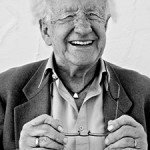Aesthetics as One Road to Peace?
By Johan Galtung
The eminent historian of Central and South India, William Dalrymple, had a remarkable article in The New York Review of Books (June 25, 2015): “The Renaissance of the Sultans”. Being a fan myself, this editorial column is very much based on that eye-opener.
The focus is on one Sultan, Ibrahim Adil Shah II, of the central Indian kingdom of Bijapur, between Mumbai and Goa; we are talking about early 17th century. The Sultan is described as “an erudite scholar, a lute player, poet, singer, calligrapher, chess master and aesthete”. How different from Western rulers with military-political skills; how similar to many Chinese rulers, emperors, mandarins with poetry, calligraphy and more as indelible part of their legitimacy.
However, the point of the story, as told by Dalrymple on the basis of the impressive works he reviews, goes far beyond describing what must have been a remarkable ruler. That ruler himself also goes beyond, even beyond this statement that “the two most beautiful things in the world are a lute and a beautiful woman”. He has a theory:
“Bringing together Hindu and Muslim traditions in an atmosphere of heterodox learning, and uniting Persians, Africans and Europeans in a cosmopolitan artistic meritocracy, Ibrahim presided over a free-thinking court in which art was a defining passion. For Ibrahim was literally obsessed with the power of art. In his poems he dwells on its ability to bring people together, and on the way that art, and particularly music, acted on the body and was capable of moving an individual to tears, or ecstasy, or a deep melancholic sadness”.
How true. We notice that he is not only bridging geographical gaps but also gaps in the body, seeking to reconcile “the old Greek medical ideas of the humors of the body” with Hindu ideas of reaching the human spirit through aesthetic appreciation.
Moreover, “through music and art he believed that his people could learn to look at each other with mutual understanding: They speak different languages, But they feel the same thing, The Turk and the Brahmin.”
Well, they hardly feel “the same thing”; but they feel, and good art engenders good feelings, visible to each other.
Nevertheless, art bringing people together is only his first message: “it is hard to label him either a Muslim or a Hindu, rather he had an aesthete’s admiration for the beauty of both cultures”.
There is a second message, not only people of different cultures meeting arts together, but arts from different cultures meeting each other. “The Persianate and often Shia culture was then cross-fertilized with the very different but astonishingly rich Hindu artistic traditions of Southern India”.
His dress was eclectic, so were the paintings he favored.
It is hardly stretching him too far to identify a theory here: people of different cultures enjoying together art of different cultures may follow where the art leads: to harmonious eclecticism.
To have them enjoy together the art of one culture after the other may already be peace-building; to expose them to art that itself bridges gaps between cultures, even more so. They will recognize their own themes, and their harmony with other cultures may become theirs.
Ibrahim Shah II seems to have been very touched by the aesthetics of music and its capacity to create harmony. All arts in time, not only space, carry a narrative, like music. There is process – not a standstill, a Still-Leben–to move people.
An enormous challenge to multi-cultural artists, to create artistic spaces for different artistic cultures to meet, not only to mix and get acquainted, but to blend, create, procreate, begetting offspring. How much peace-building effect, it is another matter.
It reminds us of another very strong feeling uniting Persians, Africans and Europeans, Turks and Brahmins, Muslims and Hindus in general: love and sex, marriage, trans-cultural, trans-border.
Thousands, millions, emotions, very strong, harmony–and disharmony. There have been wars across those borders; and there has been peace.
There might have been more wars without marriages; but some effect seems likely.
Unfortunately for Ibrahim his story ends badly; blackmailed, pressured by the Mughals in the North–Delhi, Agra – into paying them for not going to war against militarily defenseless Bijapur. As a matter of fact, “Bijapur came to be seen by the Sunni Mughals as a hotbed of Shia heresy”. Sounds familiar, sounds like ISIS today.
And in 1686 the great-grandson of Ibrahim, after an eighteen-month siege, handed over the keys to the Mughals. They burnt the art.
However, had the Mughals, of Mongolian origins but Muslims like–or unlike–Ibrahim been exposed to Ibrahim aesthetics? Had he taken on, and in, their art, their aesthetics? Or were they that big Other, to the Sultanates in the central belt of India, as Islam is to Christianity today? Were they approached, and if not, were they excluded?
The answer is not so important; the theory does not stand or fall with this case. But the question is important.
Let us bring it into the world of today.
During the “middle ages”, the Abassid Arab-Muslim dynasty produced that miracle, let us call it Granada for short. And the Holy Roman Empire of the German nation, European-Christian, produced another miracle, the Gothic cathedrals, Chartres being their Granada (there are many).
And the mix of the two exists, not by design by some transcending architect genius but by conquest, decision, re-decision: la mezquita in Córdoba, the mosque half turned into a cathedral. What a place for ecumenical encounters, many Muslims on Fridays, both-and on Saturdays with Jews, many Christians on Sundays. However, neither in Madrid do authorities see the benefits for Andaluz-ia, Spain, the world. Today.
Tomorrow Ibrahim’s light may shine inside, and enlighten them.
At that time Europe produced essentially one painting: Maria with the little child. Arabia produced ornaments. Transcendence, please! Inside the mezquita, to Gregorian chants, and Arab rhythms.
What a rich message! of harmony, of peace – and attracting millions.
Originally published by Transcend Media Service here.
